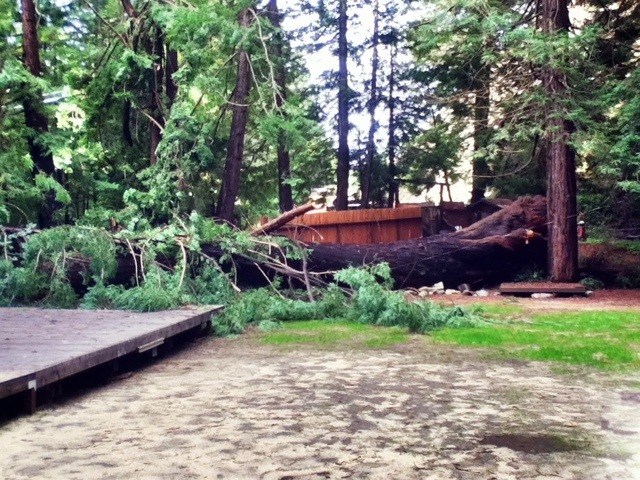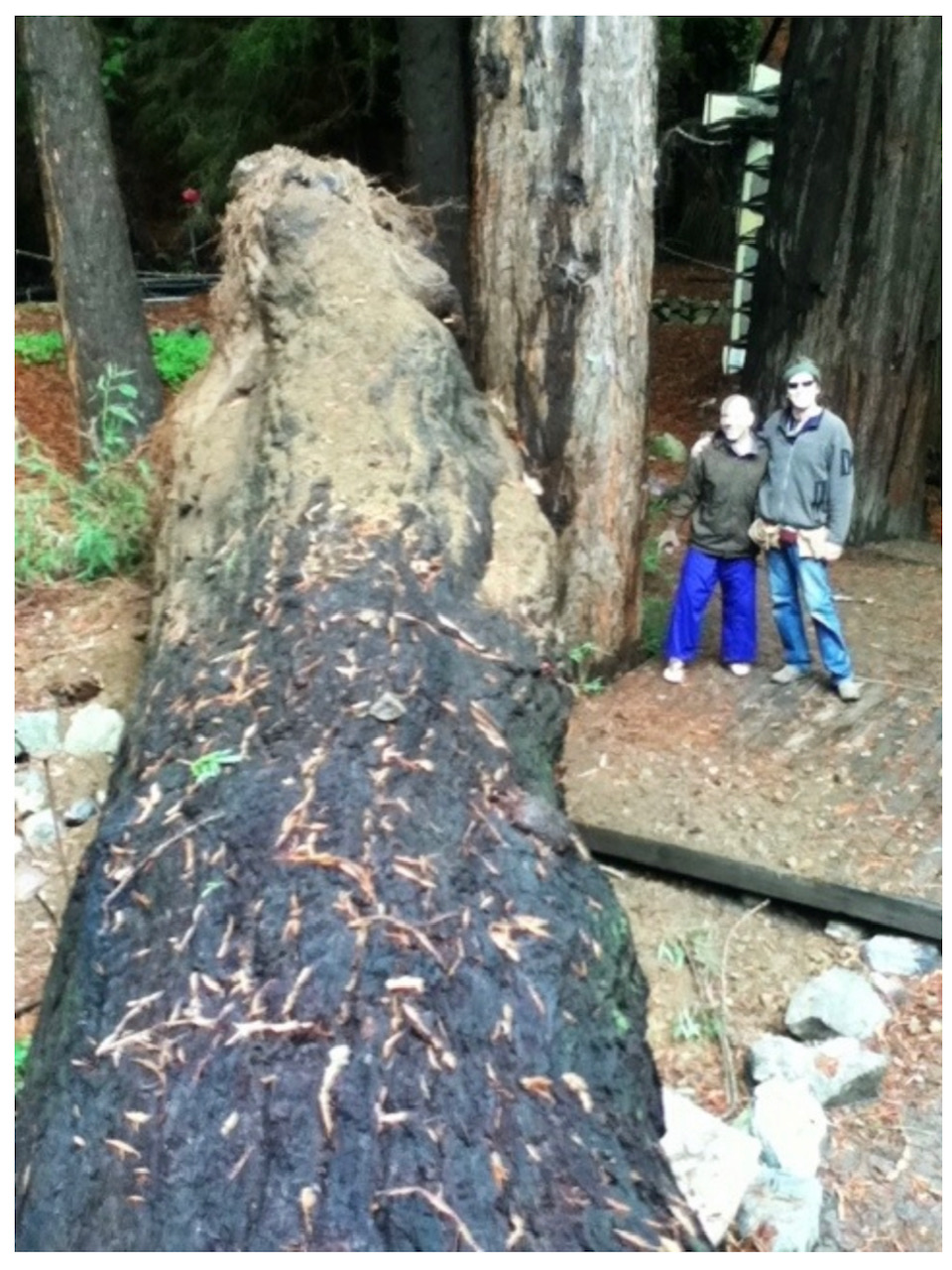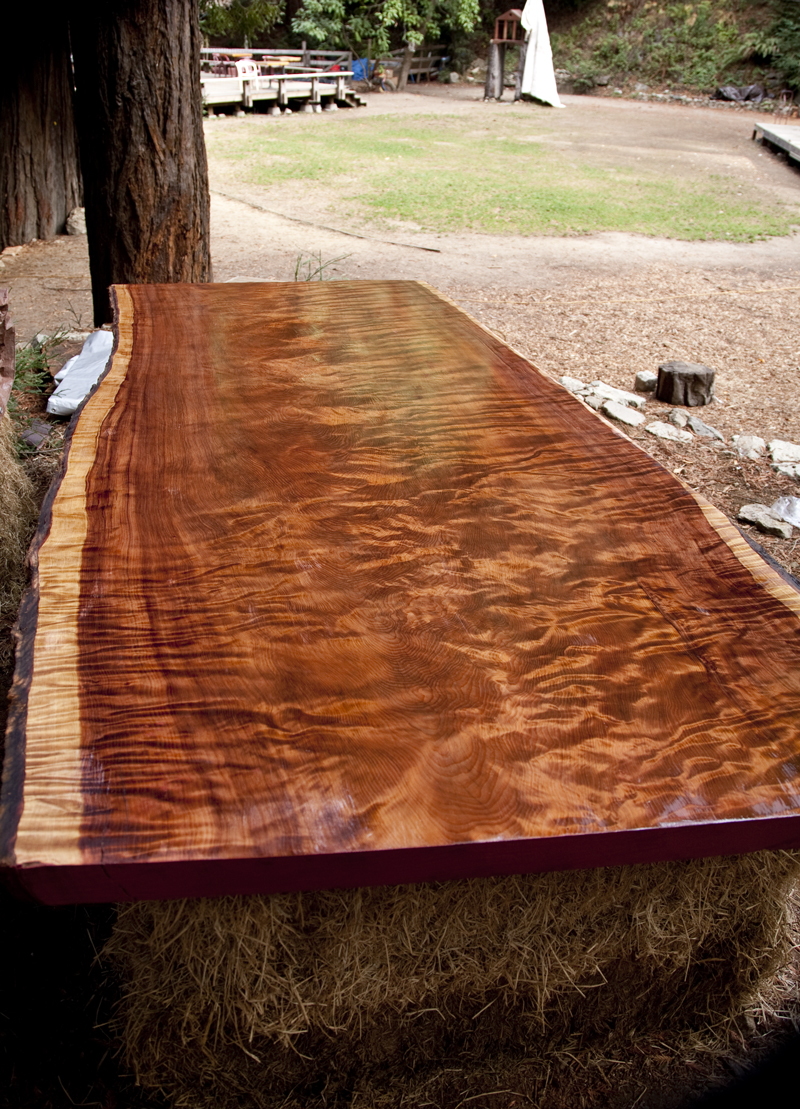| Photo by Brendon Shave
| BIG SUR
By Kate Woods Novoa
It was a clear, sunny morning when one of the beloved redwoods at Big Sur’s Henry Miller Library cracked and came down. It took out the fence but missed the library building. It was Dec. 2, 2012.
Soon after this magnificent tree hit the ground, Magnus Toren, executive director of the library, thought of a way to honor the fallen redwood and also to help fund the library. He did not want this tree to simply rot and return to the ground as compost. He would turn it into slabs and auction them off. With the assistance of two others, they were able to obtain 38 beautiful slabs to sell, out of this one tree. The process took more than three months to finish.
Two auctions of these legendary slabs have already been held, and they yielded $110,000 for the library. The last dozen slabs will be auctioned off this Sunday at the library.
The auction is a chance to purchase 500 years of Big Sur history, preserved in wood.
The Henry Miller Library was created by Emil White, a longtime friend of Miller, the artist and writer who authored groundbreaking works of fiction like “Tropic of Cancer.” Located 35 miles south of Carmel-by-the-Sea on Highway 1, the library occupies White’s former home. It is a public benefit, non-profit organization championing Miller’s literary, artistic and cultural contributions. Shortly after I moved to Big Sur in 1985, I had the pleasure of meeting Emil at the library. He was quite the ladies’ man, even into his 80s, and literally latched on to me for a bit.
Enlarge

White created the Henry Miller Library in 1981 with the help of the Big Sur Land Trust. White had moved to Big Sur in 1944 to serve as caretaker and personal secretary to Miller. The two were close friends, and Miller dedicated his book “Big Sur and the Oranges of Hieronymus Bosch” to White. In the 1960s White bought the property, a lush meadow surrounded by towering redwoods, and built his home. Additional history about this local icon, who died in 1989, can be found here.
The rainy season when the redwood came down caused havoc in many areas of the Central Coast. Highway 101 near Chualar had flooded, parts of Highway 1 had been closed due to rock and mudslides, and creeks had overflowed their banks. On Dec. 2, however, the weather was clear and sunny. But the tree came down anyway.
“The tree cracked like an asparagus, no root came with it,” Toren said. “My theory is that the ground was saturated, the roots were drinking, the sun came out, the tree drank, center of gravity slowly crawled up the trunk, then, crack! it broke by its own weight. Remember the tree grew in a giant curve …The curve also created the fantastic pattern in this particular tree.”
Researchers have been able to measure this “drinking” action — or water transport in trees — through the capillary, transpiration and osmosis actions of trees, according to Peter Wohlleben in his “The Hidden Life of Trees.”
The auction is a chance to purchase 500 years of Big Sur history, preserved in wood.
As Wohllenben instructs, in the spring, before the leaves open, the water pressure in trees is at its highest. Water shoots up the tree with such force that one can hold a stethoscope up to the trunk and hear it. We don’t know if these water actions caused the Henry Miller redwood to crack, but it is a very plausible theory, as there was no rot in this tree. An arborist estimated that the towering redwood, which was approximately 230 feet tall, may have been 700 years old. The oldest living redwood is said to be nearly 2,500 years old.
Enlarge

I wish I could afford one of these slabs, but I understand that some small pieces of this magnificent being will be available for purchase at a later date. Keep your eye on the Henry Miller Library for the sale of these bits and bobs.
While researching and writing about the library tree, I wondered if a “fairy ring” is now growing up from around where the old redwood fell. I first encountered the redwood phenomena we call fairy rings when I made my first trip on Old Coast Road from Bixby Bridge to Andrew Molera State Park. It is easy to believe in a ring of fairies when one steps inside this circle.
“A fairy ring is a common name for a group of redwood trees growing in a circle, usually around the stump of a logged old-growth tree,” according to Justin Garland, redwoods program manager for Open Space Trust. “After being cut down, a new generation of trees sprout from the roots of the fallen redwood, often creating a near-perfect circle or ring. This is one of the ways redwoods regenerate, giving them the tremendous advantage of already having a full root system compared to species that reproduce through seed.”
Toren said a fairy ring is indeed sprouting around the base of the downed redwood. I’d like to think that in 700 years the strongest of these fairies will have gathered its strength from its siblings and grow to 230 feet or more for some future generation to enjoy as we did this beloved redwood.
The auction will be held at the starting at 4 p.m., but potential buyers can bid remotely. More information is available here.

Have something to say about this story? Send us a letter.